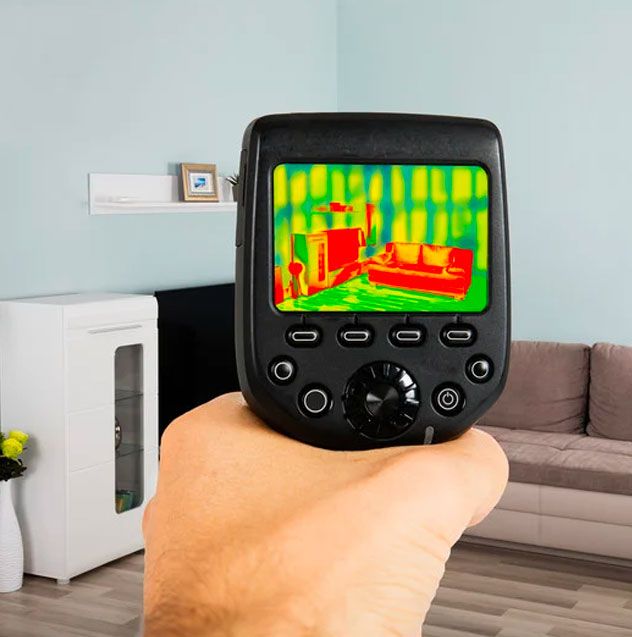The Main Principles Of Amazinghazardremoval.com Mold Testing Fairfield
The Main Principles Of Amazinghazardremoval.com Mold Testing Fairfield
Blog Article
5 Simple Techniques For Amazinghazardremoval.com Mold Testing Fairfield
Table of ContentsSome Known Questions About Amazinghazardremoval.com Mold Testing Fairfield.The smart Trick of Amazinghazardremoval.com Mold Testing Fairfield That Nobody is DiscussingOur Amazinghazardremoval.com Mold Testing Fairfield StatementsAmazinghazardremoval.com Mold Testing Fairfield - An OverviewNot known Facts About Amazinghazardremoval.com Mold Testing FairfieldAmazinghazardremoval.com Mold Testing Fairfield Can Be Fun For Everyone
Unless you're careful, you may disturb the mold growth and release spores throughout your structure. At Paul Sakson Environmental, we give professional mold testing and remediation solutions to domestic, business, and child treatment facilities across New Jersey.With us, you won't need to fret exactly how your indoor air quality is influencing your liked ones. For additional information, contact us today!.
1.1 The function of this standard is to provide standard procedures to be made use of for a mold inspection. There are 2 kinds of mold assessments defined in the IAC2 Mold Inspection Standards of Method: (1) Complete Mold And Mildew Evaluation (Area 2.0)( 2) Minimal Mold Evaluation (Area 3.0) 1.2 Unless the examiner and customer consent to a constraint of the assessment, the inspection will certainly be done at the primary building and attached parking framework.
All About Amazinghazardremoval.com Mold Testing Fairfield
1.3 A mold and mildew assessment is valid for the day of the evaluation and can not anticipate future mold growth. Since problems for mold development in a building can differ greatly in time, the outcomes of a mold and mildew examination (assessment and tasting) can just be relied upon for the factor in time at which the examination was performed.

The minimal mold examination does not consist of a visual exam of the entire building, however is limited to a certain area of the building identified and defined by the inspector. As a result, dampness intrusion, water damages, stuffy smells, noticeable mold growth, or problems for mold and mildew growth in other areas of the building may not be checked.
The roofing system covering. B. The roof drainage system, including seamless gutters and downspouts. C. The vents, flashings, skylights, chimneys, and any type of various other roof penetrations. II. The inspector is not needed to: A. Stroll on any kind of roof covering surface area. B. Predict the solution life expectations. C. Perform a water test. 4.2 Outside and Grounds I.
Not known Facts About Amazinghazardremoval.com Mold Testing Fairfield
The cladding, blinking and trim. B. Outside doors, home windows, decks, stoops, steps, stairs, verandas, railings, eaves, soffits and fascias. C. The exterior grading surrounding the building perimeter. D. Items that penetrate the outside home siding or covering products. II. The assessor is not required to: A. Inspect below ground water drainage systems. B.
Inspect abandons not associated with mold and mildew growth or moisture invasion. 4.3 Basement, Foundation, Crawlspace, and Structure I. The assessor shall evaluate: A. The structure, basement, or crawlspace consisting of air flow. B. For moisture breach II. The examiner is not called for to: A. Operate sump pumps with hard to reach drifts. B. Inspect for architectural problems not associated with mold and mildew growth or wetness intrusion.
Amazinghazardremoval.com Mold Testing Fairfield Fundamentals Explained
The assessor will Go Here evaluate: A. The air handler, distributing fan, and air filter. B. The condensate pump. C. Conveniently visible ductwork. D. Rep variety look at here of supply and return air signs up. E. The central humidifier. F. The air conditioning unit. II. The examiner is not called for to: A. Examine the a/c coil otherwise conveniently obtainable.
Evaluate the condensate frying pan if not readily easily accessible. C. Examination the performance or performance of the HVAC system. D. Inspect the inside of ductwork system. 4.5 Plumbing I. The examiner shall check: A. The readily visible main water line. B. The easily noticeable water lines. C. The readily visible drain, waste, and vent pipelines.
Hot water resource. The inspector is not called for to: A. Examination the showers and tubs by loading them with waterB. C. Inspect for pipes problems that are not associated to mold growth or moisture breach.
The inspector shall evaluate: A. Insulation. The inspector is not needed to: A. To relocate, touch, or disrupt insulation. B. Inspect for vapor retarders.
Things about Amazinghazardremoval.com Mold Testing Fairfield
The assessor shall check: A. The walls, ceilings, floors, doors and windows. B. The ventilation in the kitchen, restrooms and laundry. C. Whole-house air flow fans II. The assessor is not needed to: A. Inspect for interior defects that are not associated with mold development or moisture intrusion. 4.8 Moisture, Moisture, and Temperature Level moved here I.

The concentration of mold and mildew inside a home must not be higher than the focus of mold exterior. Mold and mildew spores in the air being sampled can vary considerably in connection to the life cycle of the mold and mildew, atmospheric and environmental conditions, and the amount of ventilation.
The Only Guide to Amazinghazardremoval.com Mold Testing Fairfield
Air tasting may be required if the mold and mildew development is suspected (as an example, stuffy odors), but can not be recognized by a visual exam. The objective of such air sampling is to figure out the area and/or extent of mold and mildew contamination in addition to an easy verification that mold development exists somewhere in the structure.
Report this page